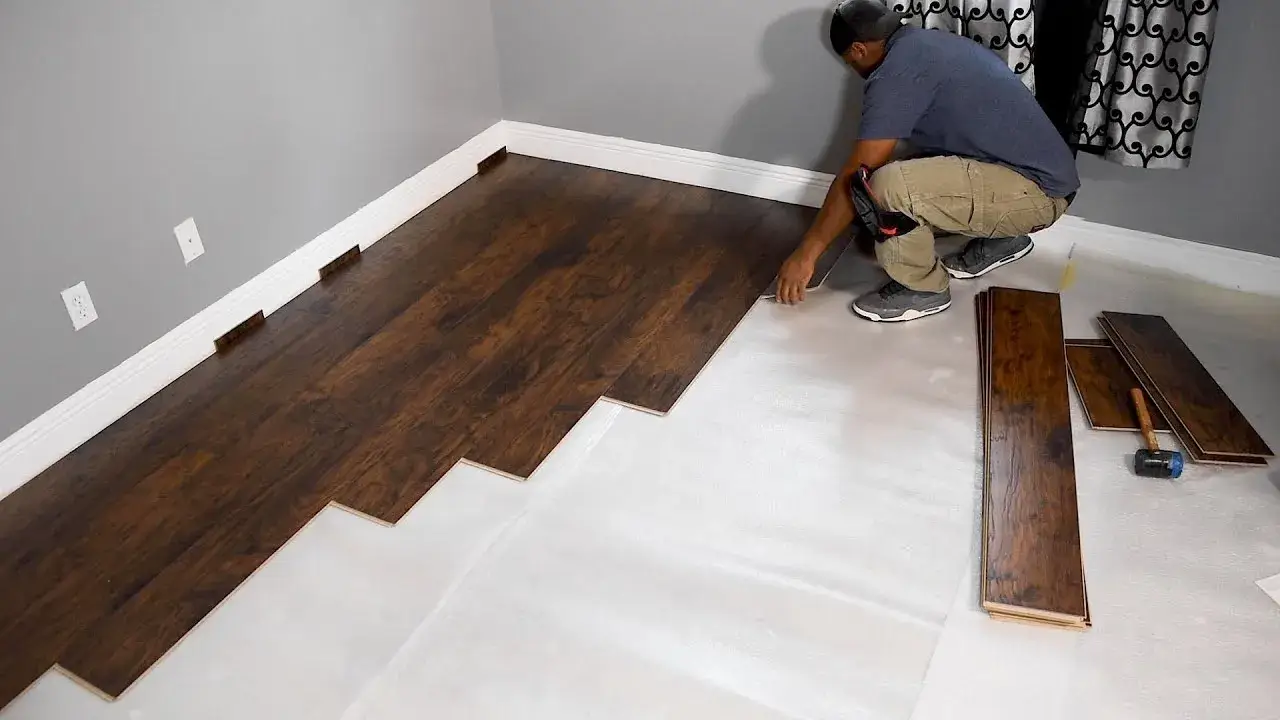A common problem with laminate flooring is that it can be easily damaged by water, moisture, or humidity. Laminate flooring is made of layers of wood, fiberboard, and resin that are fused together under high pressure. The top layer is a thin sheet of plastic that mimics the appearance of hardwood, tile, or stone. While laminate flooring is durable, affordable, and easy to install, it is not waterproof or resistant to moisture. This means that any exposure to water, moisture, or humidity can cause the laminate flooring to swell, warp, buckle, peel, or mold.
How does water damage laminate flooring?
Water damage can occur in laminate flooring due to various reasons, such as:
- Spills, leaks, or floods that are not cleaned up quickly or properly
- High humidity levels in the room or the subfloor
- Improper installation or maintenance of the laminate flooring or the underlayment
- Cracks, gaps, or seams in the laminate flooring or the edges
- Lack of expansion joints or transitions between different rooms or flooring types
- Use of harsh or abrasive cleaners or tools that can scratch or damage the laminate surface
When water or moisture seeps into the laminate flooring, it can affect the core layer of wood or fiberboard, which is porous and absorbent. The core layer can swell or expand, causing the laminate flooring to lose its shape and integrity. The laminate surface can also peel or detach from the core layer, creating bubbles or blisters. The water or moisture can also promote the growth of mold, mildew, or bacteria, which can cause health problems and unpleasant odors.
How to prevent water damage in laminate flooring?
Water damage in laminate flooring can be prevented by following some simple tips, such as:
- Choose a high-quality laminate flooring that has a water-resistant or waterproof coating or treatment
- Install a moisture barrier or vapor barrier under the laminate flooring to protect it from the subfloor
- Leave a gap of at least 1/4 inch between the laminate flooring and the walls, door frames, or other fixtures to allow for expansion and contraction
- Use transition strips or T-moldings to separate the laminate flooring from other flooring types or rooms
- Clean up any spills, leaks, or floods as soon as possible using a dry cloth or mop
- Avoid wet mopping or steam cleaning the laminate flooring, and use only a damp cloth or a laminate-specific cleaner
- Maintain a moderate humidity level in the room and use a dehumidifier or an air conditioner if needed
- Inspect the laminate flooring regularly for any signs of water damage or mold and repair or replace any damaged planks
How to repair water damage in laminate flooring?
If water damage has already occurred in laminate flooring, it may be possible to repair it depending on the extent and severity of the damage. Some steps to repair water damage in laminate flooring are:
- Identify the source and cause of the water damage and fix it
- Remove any furniture, rugs, or other items from the affected area
- Remove the baseboards or moldings around the damaged planks
- Carefully lift up the damaged planks using a pry bar or a utility knife, starting from the nearest wall or edge
- Discard the damaged planks and check the underlayment and the subfloor for any moisture or mold
- Replace the underlayment or the subfloor if needed and let it dry completely
- Install new planks that match the original laminate flooring and secure them with glue or nails
- Replace the baseboards or moldings and restore the furniture, rugs, or other items
Conclusion
Laminate flooring is a popular choice for many homeowners because of its durability, affordability, and versatility. However, laminate flooring is also susceptible to water damage, which can ruin its appearance and performance. Water damage can be prevented by choosing a water-resistant or waterproof laminate flooring, installing a moisture barrier under the laminate flooring, leaving a gap for expansion and contraction, using transition strips or T-moldings, cleaning up spills quickly, avoiding wet mopping or steam cleaning, maintaining a moderate humidity level, and inspecting the laminate flooring regularly. If water damage has already occurred, it may be possible to repair it by removing and replacing the damaged planks, underlayment, or subfloor. By following these tips, laminate flooring can last for a long time and look great in any room.

